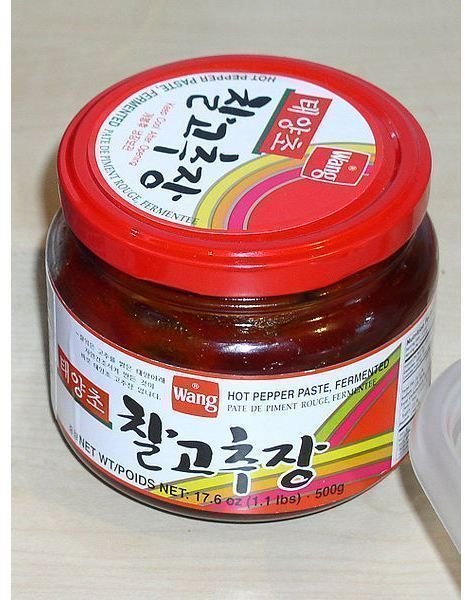Gochujang - Korean Hot Pepper Paste for Diet and Weight Loss
What Is It?
Besides kimchi, Korea’s most famous condiment is gochujang, a thick red pepper paste made from red chili peppers, glutinous rice, soybeans, and salt. Like kimchi, it is also fermented in the sun to enhance its flavor, although today’s commercial gochujang is produced in factories in South Korea.
Gochujang is a versatile paste used in numerous dishes to enhance the savory taste of food. Gochujang has a slightly sweet, sour, and very spicy flavor, with traces of soy sauce reminiscent in its aftertaste. Gochujang is also a favored diet condiment because of its low fat and calorie content. It is also rich in protein and antioxidant rich vitamins, adding a nutritional boost to your diet.
Let’s learn more about its health benefits and how to incorporate it into your diet.
Health Benefits
Gochujang has numerous health and dietary benefits.
Protein: Gochujang contains plenty of protein, essential for building lean muscle tissue. Protein promotes fat loss when used in conjunction with a healthy, well balanced diet. According to Donald Layman of the University of Illinois, a high protein diet also reduces appetite.
Vitamin B2: An essential vitamin for processing calories from fat and carbohydrates, vitamin B2 ensures healthy functioning of the thyroid and stabilizes the metabolism. A lack of vitamin B2 causes issues with the thyroid.
Vitamin C: It is also a rich source of vitamin C, which is essential for preventative health. Vitamin C provides the body with antioxidants that protect cells from free radical damage, a leading cause of cancer. Vitamin C also helps prevent cardiovascular disease.
Capsaicin: A powerful chemical found only in spicy foods, capsaicin increases the metabolism and fat burning processes. According to several Japanese studies, Japanese women who consumed foods with capsaicin increased their metabolism and lost weight.
Calories: Although it varies, the calories in gochujang range from 10 to 45 calories per tablespoon.
Fat: It contains less than one gram of fat per serving.
In summary, it is healthy for a person’s cardiovascular system, boosts the metabolism, and contains less than 100 calories per serving. Very few condiments contain the same benefits as gochujang.
How to Use It
Gochujang is used in numerous meat and vegetable dishes. It is commonly used in dak kalbi, kimchi stew, bibimbap, and tteokbokki. Many Koreans also use it in naeng myun and kimbap to make it spicier and more appetizing.
If you want to incorporate it into your diet, try these ideas:
-
Barbecue wings. Instead of using barbecue sauce to sweeten chicken wings, mix one cup of gochujang with water to soften it. Drizzle it over chicken. Add sesame seeds to garnish.
-
Grilled vegetables. To add an instant zest to vegetables on the grill, thinly spread the paste onto vegetables with a brush. Let the vegetables grill, turning it over occasionally.
-
Sandwiches. Gochujang goes great with meat sandwiches, so make it healthy by dabbing it gently over bread. Lay your favorite meat slices on the bread. Eat “as is” for a spicy, delicious alternative to regular meat sandwiches.
Don’t be afraid to experiment either! Gochujang goes well with any vegetable or meat dish, including salads, pork loins, quesadillas and lettuce wraps. Experiment with it to find your own diet friendly alternatives that appease your appetite.
This post is part of the series: Dietary Benefits of Korean Food
Korean food is filling, nutritious, and probably Korea’s best kept secret. Let’s explore the hidden benefits of Korean food – both for your health and your waistline.
